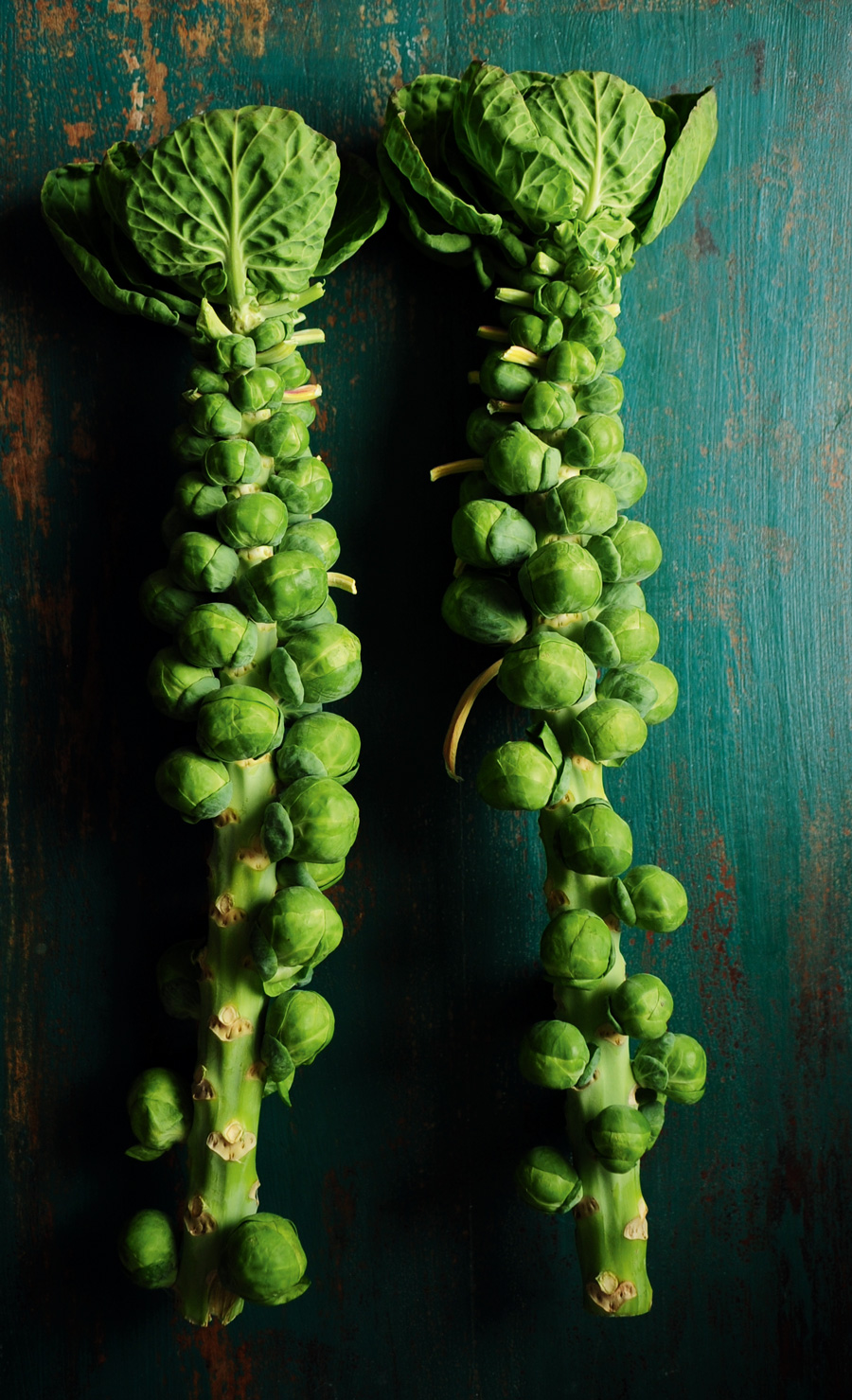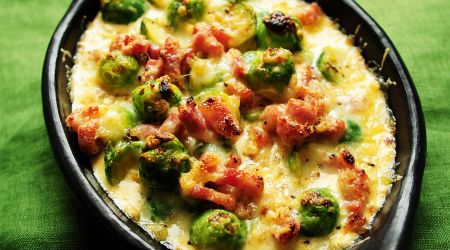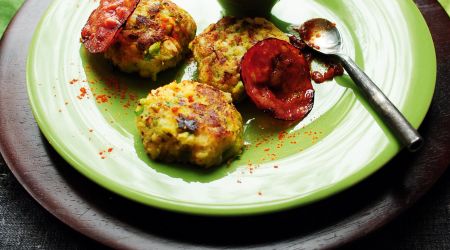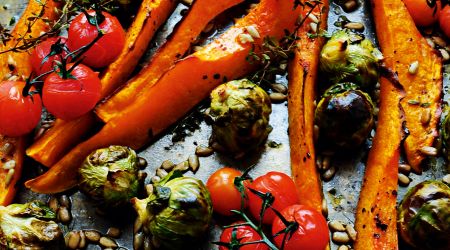Brussels sprout
These miniature cabbages are a festive must, says Rosemary Barron with recipes by Linda Tubby
It’s fair to say not everyone is a fan of Brussels sprouts, but if you’ve been put off by childhood memories of overcooked, stinky sprouts – think again. The Brussels sprout (brassica oleracea var. gemmifera or ‘garden cabbage-bearing gems’) is an offspring of wild cabbage, a plant that can be found on the chalk and limestone cliffs of southern England (though there is some doubt as to whether it’s a native plant or one that ‘escaped’ from local Roman garrison kitchen gardens). Polymorphic in character (meaning it can assume a variety of different forms), its kitchen-garden cultivars – kale, cabbage, kohlrabi, Brussels sprouts, broccoli and cauliflower – are products of centuries of careful seed-selection, or ‘enobling’, by gardeners. Each group can quickly revert, or change, if inoculated with the pollen from another group, so seed producers are very careful how they grow brassicas. This points to a mystery surrounding Brussels sprouts.
Some sources claim that they were grown in ancient Rome. If so, where were they between then and their first mention which, according to Sophie Grigson, was in market regulations of 1213, in Flanders? Some suggest that the cabbage sprouts so beloved by the Romans were in fact shoots sprouting from the central stem on the leaf axis, and not the headed buds, or sprouts, which were not bred until centuries later. One writer in 1623 wrote of a (cabbage) plant bearing some 50 heads the size of an egg. And Dorothy Hartley in Food in England mentions cooking instructions for a similar-sounding vegetable in a 1699 gardening manual (and, intriguingly, that ‘the best seed of this plant comes from Denmark and Russia’). Then there is a long gap before they are mentioned again.
Brussels sprouts belong to the more winter-hardy subspecies of the cabbage family. If you grow your own, allow 10-14 days for germination, and plant out in well-drained soil four months before the first frost. After three months, you should be able to harvest your first crop from the stems, with more following. Turn the plume of large leaves at the top of the stem into a crunchy winter greens salad or a dish of sautéed greens.
When buying, choose Brussels sprouts that are firm, compact, of similar size (2-4cm) and a fresh green; avoid those with loose leaves or any trace of yellow. For small ones, trim the ends; if larger, cut a cross at the base of each one with a small knife – this will help them cook more evenly. For sauce-based recipes, first steam the sprouts, or lightly boil them in a pan with a few centimetres of salted water for three to four minutes. Some cooks like to include shredded raw, garden-fresh Brussels sprouts in winter salads or quarter them before adding to soups a few minutes before serving. Try them gently sautéed in olive oil for a few minutes, then sprinkled with lemon juice, cracked pepper and coarse sea salt.
If you still need to be persuaded to embrace this strange but attractive vegetable, consider this: when raw, a serving of Brussels sprouts contains half the recommended daily amount of vitamin C, is rich in folate, thiamine and other B vitamins, and a good source of vitamins A and E, iron, phosphorous, potassium, calcium, magnesium and zinc. Properly – that is, lightly – cooked, most nutrients remain. With their delicate flavour and alluring shape, Brussels sprouts are a fine accompaniment to beef and game, and a welcome sight on the Christmas table.
But don’t limit them to these festive spreads: their savoury flavour and affinity with butter, olive oil, cheese and nuts make them perfect for a vegetable main throughout their season, and their pretty appearance, packing beneath it so many good nutrients, can only bring joy on dark winter days. Just don’t overcook them.

Recipes
Get Premium access to all the latest content online
Subscribe and view full print editions online... Subscribe




